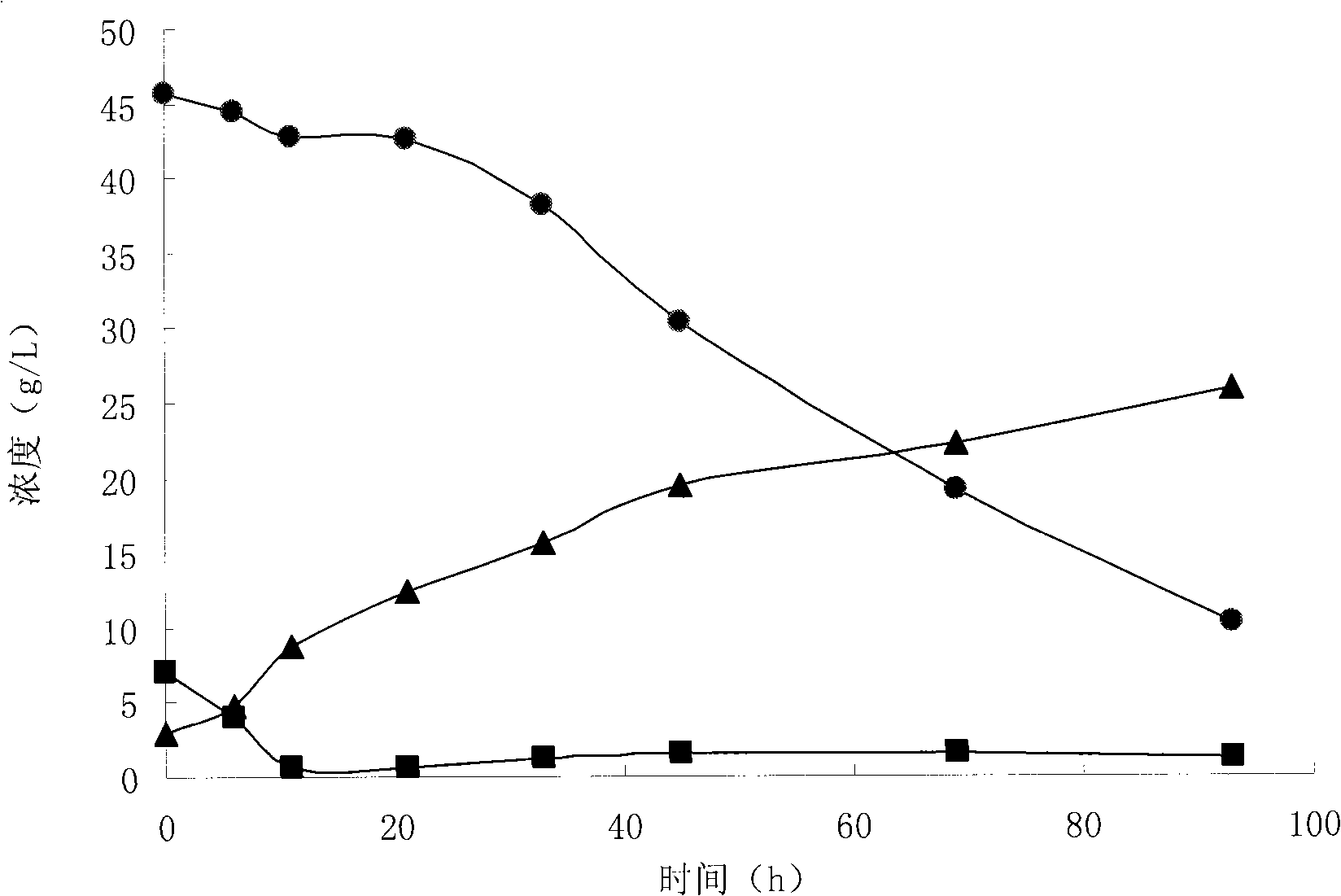Recombinant distiller's yeast and use thereof in eutrit production
A technology of Saccharomyces cerevisiae and xylitol, applied in the field of microbial engineering
- Summary
- Abstract
- Description
- Claims
- Application Information
AI Technical Summary
Problems solved by technology
Method used
Image
Examples
Embodiment 1
[0034] A Saccharomyces cerevisiae (Saccharomyces cerevisiae) GZ-5-T2, which has been preserved in the General Microorganism Center of China Committee for the Collection of Microorganisms on July 10, 2008, and its preservation number is CGMCC No.2581. The rDNA repeat region of the Saccharomyces cerevisiae GZ-5-T2 chromosome has multiple xylose reductase genes XYL1 derived from Pichia spp. The homologous integration of the rDNA region of the chromosome of the industrial production strain GZ-5-T2 was realized. At the same time, according to the requirements of stability, the rDNA sequence of Saccharomyces cerevisiae was analyzed, and the length of the three regions spanning 17S, 5.8S and 26S on the selected rDNA was A 2.2 kb fragment served as the integration site.
Embodiment 2
[0036] The construction method of Saccharomyces cerevisiae GZ-5-T2:
[0037] (1) Recombinant plasmid pYMIC-xyl1 was linearized at the 6453bp enzyme cutting site with restriction endonuclease HpaI.
[0038] (2) The Saccharomyces cerevisiae industrial strain GZ-5 was transformed by the lithium acetate transformation method, and the recombinant strain GZ-5-T2 was obtained by screening with YEPD plates added with copper ions.
[0039]Wherein, the PGK promoter (PGK promoter) and PGK terminator (PGK terminator) in the recombinant plasmid vector pYMIC-xyl1 in step (1) are cloned in the yeast chromosome DNA, and the promoter and the terminator are inserted and cloned in the trunk of Pichia Xylose reductase gene XYL1 of yeast chromosomal DNA;
[0040] Wherein the copper ion resistance gene (CUP I) in the recombinant plasmid vector pYMIC-xyl1 in the step (1) is cloned in the chromosomal DNA of Saccharomyces cerevisiae as a screening marker.
[0041] Wherein the rDNA sequence in the re...
Embodiment 3
[0044] The application of Saccharomyces cerevisiae GZ-5-T2 in the production of xylitol, the specific steps are as follows:
[0045] (1) Use 0.1wt% hydrochloric acid together with 0.01w% ferric chloride promoter to completely convert the hemicellulose in the corncob powder into xylose, arabinose, and glucose to obtain sugar liquid;
[0046] (2) decolouring, electrodialysis deacidification and ion exchange resin removal of impurities with the sugar solution obtained in step (1) to obtain a fermentation substrate; after electrodialysis deacidification, the acid concentration in the acid water reaches 0.04wt%, and reuse can save nearly 20% acid dosage;
[0047] (3) adding mass-volume ratio to the fermented substrate prepared in step (2) is 0.5% yeast powder, and mass-volume ratio is 0.5% peptone, and inoculate Saccharomyces cerevisiae GZ-5-T2 by volume percentage 8% inoculum , fermented for 60 hours at a temperature of 26°C, a pH of 4.6, and an aeration rate of 0.1vvm to obtain ...
PUM
 Login to View More
Login to View More Abstract
Description
Claims
Application Information
 Login to View More
Login to View More - R&D
- Intellectual Property
- Life Sciences
- Materials
- Tech Scout
- Unparalleled Data Quality
- Higher Quality Content
- 60% Fewer Hallucinations
Browse by: Latest US Patents, China's latest patents, Technical Efficacy Thesaurus, Application Domain, Technology Topic, Popular Technical Reports.
© 2025 PatSnap. All rights reserved.Legal|Privacy policy|Modern Slavery Act Transparency Statement|Sitemap|About US| Contact US: help@patsnap.com



